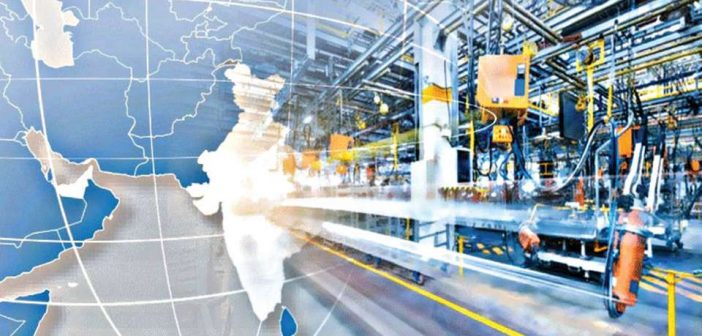In recent months, India’s financial landscape has witnessed a significant surge in the launch of New Fund Offers (NFOs) focused on manufacturing. This wave of activity is driven by a combination of economic strategies, policy support, and investor sentiment. Understanding the reasons behind this surge and its potential impact on both the sector and investors requires a closer look at the broader economic context, regulatory environment, and investor behavior.
The Context: India’s Manufacturing Push
India’s manufacturing sector has been a focal point of economic policy for several years, aligning with the government’s “Make in India” initiative launched in 2014. This program aims to position India as a global manufacturing hub by promoting domestic production and attracting foreign direct investment (FDI). The government’s vision includes enhancing the sector’s contribution to GDP, creating job opportunities, and improving the country’s export profile.
In recent years, several macroeconomic and geopolitical factors have provided momentum to this vision. The global supply chain disruptions caused by the COVID-19 pandemic and geopolitical tensions, such as the trade conflicts between the US and China, have intensified the need for supply chain diversification. India, with its large labor force and growing infrastructure, has positioned itself as an attractive alternative for global manufacturing companies.
Rise of Manufacturing Fund NFOs
In this context, fund houses in India are increasingly launching NFOs specifically targeting the manufacturing sector. These NFOs are designed to capitalize on the anticipated growth of manufacturing in India by investing in companies that are poised to benefit from the sector’s expansion.
Several factors are driving this trend:
- Government Initiatives and Policy Support: The Indian government has introduced several schemes to boost the manufacturing sector. For instance, the Production Linked Incentive (PLI) scheme aims to provide incentives to companies for incremental sales of products manufactured in India. Such policies are expected to enhance the profitability and growth prospects of manufacturing firms, making them attractive investment opportunities.
- Economic Recovery and Growth: As India recovers from the pandemic-induced economic slowdown, the manufacturing sector is projected to play a crucial role in driving GDP growth. The sector’s revival is bolstered by increased domestic consumption, infrastructure development, and export opportunities. Fund houses see this as an opportune moment to launch products that align with this growth trajectory.
- Investor Appetite for Sector-Specific Funds: Investors are increasingly seeking targeted investment opportunities that allow them to benefit from specific economic trends. Manufacturing funds offer a way to tap into the sector’s potential while diversifying investment portfolios. The appeal of sector-specific funds is amplified by the growing interest in thematic investing, which aligns with broader economic or social trends.
Implications for the Sector
- Increased Competition and Innovation: The influx of manufacturing-focused NFOs signifies heightened competition among fund houses. This competitive environment is likely to drive innovation in fund management strategies, product offerings, and investor engagement. Fund houses may introduce varied approaches to capturing manufacturing sector growth, potentially leading to more sophisticated and tailored investment products.
- Enhanced Capital Flow into Manufacturing: The launch of these funds is expected to channel significant capital into the manufacturing sector. This influx of funds can support the expansion and modernization of manufacturing facilities, research and development, and workforce training. Ultimately, this could enhance the sector’s competitiveness on a global scale.
- Increased Scrutiny and Standards: With the rise of sector-specific funds, there will be greater scrutiny regarding fund performance and management. Investors and regulatory bodies will closely monitor the effectiveness of these funds in achieving their stated objectives. This increased oversight could lead to higher standards of transparency and accountability within the sector.
Implications for Investors
- Opportunities and Risks: For investors, manufacturing fund NFOs offer an opportunity to gain exposure to a sector that is poised for growth. These funds can potentially provide attractive returns, particularly if the manufacturing sector performs well in the coming years. However, investors should be aware of the associated risks, including sector-specific volatility and the impact of macroeconomic factors on manufacturing performance.
- Diversification Benefits: Investing in manufacturing-focused funds allows investors to diversify their portfolios by adding sector-specific exposure. This can be particularly beneficial in a market environment where traditional asset classes, such as equities and bonds, may face varying levels of risk and return.
- Need for Due Diligence: Investors should conduct thorough due diligence before investing in these NFOs. This includes evaluating the fund’s investment strategy, the track record of the fund house, and the underlying assets. Understanding the fund’s alignment with personal investment goals and risk tolerance is crucial for making informed investment decisions.
Conclusion
The simultaneous launch of manufacturing fund NFOs by various fund houses in India is a reflection of the sector’s growing prominence and potential. This trend is driven by supportive government policies, economic recovery, and investor interest in sector-specific opportunities. While the influx of capital into the manufacturing sector is likely to spur growth and innovation, investors must remain vigilant and informed to navigate the associated risks and opportunities. As the manufacturing sector continues to evolve, both fund houses and investors will need to stay agile and responsive to the changing economic landscape.





